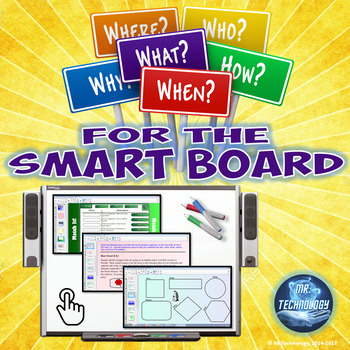Who What When Where Why How for the SMART Board
- NOTEBOOK (SMARTboard) File
Description
Who What When Where Why How for the SMART Board
This Common Core-Aligned interactive SMART Board lesson exposes students to the rigor of pulling out information from nonfiction informational texts. Lesson includes a You Tube video link to a catchy song about the 5 W's (lesson engagement), an interactive matching game, one practice story, and several nonfiction articles to distinguish and practice between the who, what, when, where, why, and how using graphic organizers to gather and organize information. Lesson also includes an assessment activity (poem writing activity), and a Sticky Note activity/project as an extension for synthesis and understanding of what was taught.
☰ This product can be imported into Promethean ActivInspire (Click File--->Import--->and choose your SMART Notebook file to open)
HOME SCHOOL USERS: Use the SMART Interactive Viewer
(a FREE SMART Technologies application that will allow you to view and use this file).
Make sure to use the most current Adobe Flash Player and SMART Notebook software. In some cases, when regular updating does not work, it is necessary for users to uninstall their version of SMART Notebook and then download the current version from SMART Technologies.
© Copyright MrTechnology, 2013





